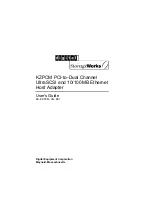
Fabric OS 6.2 administrator guide 529
6.
Reenable the switches in the updated fabric one at a time. In a core/edge network, enable the core
switches first.
7.
After the fabric has reconverged, use the
cfgEnable
command to update zoning.
8.
Bring the devices online in the order appropriate to the SAN. This usually involves starting up the
storage arrays first, and the hosts last.
9.
For any devices manually bound by PID, bring the device back online, but do not start applications.
Update their bindings and reboot again if necessary. This might involve changing them to the new
PIDs, or might (preferably) involve changing to WWN binding.
10.
For any devices automatically bound by PID, reboot the device to rebuild the device tree (some
operating systems require a special command to do this, such as “boot –r” in Solaris).
11.
For devices that do not bind by PID or have had their PID binding updated, bring them back up and
resume I/O.
12.
Verify that all I/O has resumed correctly.
Hybrid update
It is possible to combine the online and offline methods for fabrics where only a few devices bind by PID.
Because any hybrid procedure is extremely customized, it is necessary to work closely with the SAN service
provider in these cases.
Changing to core PID format
In Fabric OS release 4.2.0 and later, Native PID format is not supported; the default format is the Core PID
format.
In Fabric OS 3.1.2 and later, Core PID format is the default configuration.
Although the PID format is listed in the configuration file, do not edit the file to change the setting there.
Instead, use the
configure
command in Fabric OS 6.0.0 and earlier. When you use the
configure
command, switch databases that contain PID-sensitive information are automatically updated. If you
change the setting in the configuration file and then download the edited file, the PID format will be
changed, but the database entries will not, and so they will be incorrect.
The following list maps the PID format names to the switch PID address modes used in the management
interfaces:
•
Native PID—Switch PID address mode 0
•
Core PID—Switch PID address mode 1
•
Extended edge PID—Switch PID address mode 2
Summary of Contents for A7533A - Brocade 4Gb SAN Switch Base
Page 1: ...HP StorageWorks Fabric OS 6 2 administrator guide Part number 5697 0016 Edition May 2009 ...
Page 24: ...24 ...
Page 99: ...Fabric OS 6 2 administrator guide 99 ...
Page 100: ...100 Managing user accounts ...
Page 118: ...116 Configuring standard security features ...
Page 164: ...162 Configuring advanced security features ...
Page 234: ...232 Installing and maintaining firmware ...
Page 268: ...266 Administering advanced zoning ...
Page 284: ...282 Configuring Enterprise class platforms ...
Page 292: ...290 Routing traffic ...
Page 294: ...292 Interoperability for merged SANs ...
Page 302: ...300 Configuring the Distributed Management Server ...
Page 334: ...332 iSCSI gateway service ...
Page 340: ...338 Administering NPIV ...
Page 407: ...Fabric OS 6 2 administrator guide 405 ...
Page 408: ...406 Using the FC FC routing service ...
Page 438: ...434 Administering extended fabrics ...
Page 460: ...456 Administering ISL trunking ...
Page 516: ...512 FICON fabrics ...
Page 526: ...522 Configuring and monitoring FICON Extension Services ...
Page 540: ...536 Configuring the PID format ...
Page 544: ...540 Understanding legacy password behavior ...
Page 546: ...542 Mixed fabric configurations for non merge SANs ...
Page 550: ...546 Migrating from an MP Router to a 400 MP Router ...
Page 558: ...554 Inband Management ...
Page 572: ...568 ...
















































